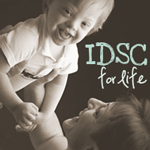Well, hello, everyone! It's been awhile since I've blogged. Amazing how fast time flies by. Before I knew it, it was October again. What comes with October? Down Syndrome Awareness Month.
For the last few years I've done the 31 for 21 blog challenge - where you blog every day for Down syndrome. This year though, the time snuck up on me and I totally forgot about 31 for 21, until just a few days ago! Sooooo, oh well.
In honor of Down Syndrome Awareness month, I am going to do a special giveaway! One of my website clients runs an online jewelry store called Creative Elements 4 You. She has living life lockets & floating locket charms. I've had the opportunity to photograph many of her items for her website. And, since she heard I had a brother with Down syndrome, she made several custom Trisomy 21/Down Syndrome lockets and jewelry pieces. There's a whole special section on her website for Special Needs now :). Pretty cool!
When I was taking photographs of the T21 jewelry pieces for the website, this one below caught my eye, so I traded her for it. It has 'T21' stamped on one tag and 'Wonderfully made' stamped on the other tag. Perfect!
But, each of the T21 pieces she has are beautiful!
So, I have one of her beautiful lockets here to give away. This giveaway starts NOW and ends October 31, 2013 at 11:59pm. One winner will be chosen, announced on the blog and contacted by email.
There's a few ways to enter the giveaway below. You can enter up to 8 times! After the initial entry below, you will see all 7 bonus entries and can choose to do as few or as many of them as you'd like.
1) Enter with your email in the form below (required)
--Bonus entries:
2) Like 'Creative Elements 4 You' on Facebook (optional)
3) Follow 'Creative Elements 4 You' on Pinterest (optional)
4) Follow 'Creative Elements 4 You' on Instagram (optional)
5) Follow me (Qadoshyah) on Twitter (optional)
6) Tweet this giveaway (optional)
7) Follow me (Qadoshyah - CountryGirlDesigns) on Instagram (optional)
8) Re-blog this giveaway on your own blog and put the link in the giveaway bonus box below (optional). Put it on your blog by linking to this post or by using this code:
<div align="center"><a href="https://promosimple.com/ps/2766" data-campaign="2766" class="promosimple"></a><script type="text/javascript" src="https://promosimple.com/api/1.0/campaign/2766/iframe-loader"></script><noscript>You need to enable javascript to enter this campaign !<br />Powered by <a href="http://www.promosimple.com/">PromoSimple</a>.</noscript></div>Have fun and spread the word!

Tweet










































